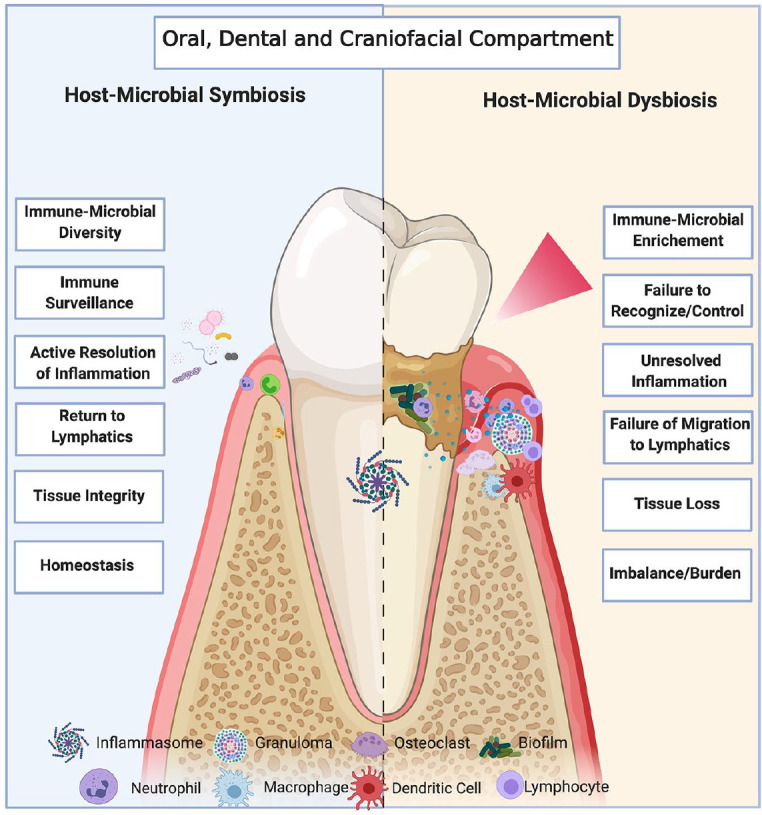Figure 2.

The oral microbiome interacts with host inflammatory networks, with oral dysbiosis inducing local disease. Schematic diagram of oral microbiome inflammatory interactions in health (left panel) and disease (right panel). In a healthy state, the oral microbiome and host immune system exist in a state of symbiosis, with commensal bacteria and sentinel host immune cells (neutrophils, inflammasomes) coexisting in oral tissue. This symbiosis is characterized by a diverse oral microbiome, with any inflammation (due to injury or insult) being acute and actively resolved to restore tissue integrity and homeostasis. However, should microbial dysbiosis occur, there is an enrichment of pathogenic over commensal bacteria and increased immune cell infiltration (neutrophils, macrophages, dendritic cells, other lymphocytes) in oral tissue, which can lead to biofilm and subsequent inflammasome formation. This failure to recognize or control bacterial dysbiosis, with immune cell infiltration, causes chronic low-grade inflammation, which can lead to tissue loss locally and systemic disease more broadly. Image created with BioRender.com.
